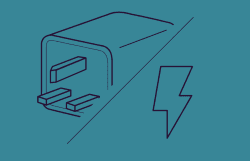Energy efficiency is a critical consideration for businesses, especially those that rely on office equipment. Most businesses want to reduce energy consumption and cut down on costs, but many do not know how to achieve this. This blog post will provide insight into energy efficiency in office equipment and how businesses can optimize their energy use to reduce costs.
Understanding Commercial Building Appliance Energy Use
The first step to optimizing energy use is to understand commercial appliance energy use. In general, office equipment consumes a lot of energy and contributes to a significant portion of a company’s energy consumption. The following are some of the most common office equipment that consumes the most energy:
- Desktop computers and laptops
- Printers and copiers
- Heating, ventilation, and air conditioning (HVAC) systems
- Lighting systems
- Servers and data centers
These appliances are critical to daily office operations, but they also consume a lot of energy. However, there are several steps businesses can take to optimize energy use and reduce energy consumption.
Save Energy In Office Equipment
The following are some tips to optimize energy use in office equipment:
- Choose Energy Star certified appliances: When purchasing new office equipment, choose Energy Star certified appliances. These appliances are designed to use less energy while still providing optimal performance.
- Unplug appliances when not in use: Many office appliances use power even when they are not in use. Unplugging them or using a power strip to turn off appliances can significantly reduce energy consumption.
- Adjust computer settings: Adjusting computer settings to power-saving mode can help reduce energy consumption. Reducing the brightness of the screen and turning off the monitor when not in use are also effective ways to conserve energy.
- Regularly maintain HVAC systems: Regular maintenance of HVAC systems can help optimize energy use. Regularly cleaning and replacing filters, ensuring proper insulation, and programming temperature settings can help reduce energy consumption.
- Switch to LED lighting: LED lighting is energy-efficient and lasts longer than traditional lighting. Switching to LED lighting can help businesses save money on energy bills.
The Benefits of Energy Efficiency in Commerical Buildings
Optimizing energy use in office equipment has several benefits, including:
- Cost savings: Businesses can significantly reduce their energy bills by optimizing energy use in office equipment.
- Environmental impact: Reducing energy consumption helps to reduce greenhouse gas emissions and lower the carbon footprint of a business.
- Improved equipment lifespan: Regular maintenance of office equipment helps to prolong its lifespan, reducing the need for costly repairs and replacements.
- Improved productivity: Employees tend to work better in an environment with optimized energy use. Optimized energy use can also lead to a better work environment and improved morale.
Energy-Saving Ideas For Energy Efficiency In Commercial Buildings
Energy efficiency in commercial buildings is crucial in reducing energy consumption, lowering energy bills, and reducing carbon emissions. Commercial buildings, such as office buildings, hospitals, and schools, account for a significant portion of energy consumption in the United States. However, there are many energy-saving ideas that can be implemented to improve energy efficiency in commercial buildings. In this blog post, we will explore some of these ideas.
Conduct an Energy-Saving Audit
The first step in improving energy efficiency in commercial buildings is to conduct an energy audit. An energy audit is an assessment of a building’s energy use that identifies areas where energy is being wasted. An energy audit can help identify energy-saving opportunities and prioritize energy-saving measures. An energy audit can be performed by a professional energy auditor or a building engineer.
Install Energy-Efficient Lighting
Lighting is one of the most significant sources of energy consumption in commercial buildings. By replacing traditional incandescent light bulbs with LED light bulbs, businesses can reduce energy consumption by up to 80%. LED lighting is more energy-efficient, lasts longer, and produces less heat than traditional incandescent light bulbs.
Upgrade HVAC Systems
Heating, ventilation, and air conditioning (HVAC) systems are responsible for a significant portion of energy consumption in commercial buildings. Upgrading to energy-efficient HVAC systems can save businesses up to 30% on energy bills. HVAC systems should be inspected regularly and filters should be replaced as needed.
Implement Energy Saving Management Systems
Energy management systems (EMS) can help businesses monitor and control energy consumption. EMS can be used to automate lighting, HVAC systems, and other energy-consuming systems. These systems can help reduce energy consumption during non-business hours and when spaces are unoccupied.
Get Smart Power Strips For Better Office Equipment Energy Usage
Smart power strips are designed to automatically turn off power to devices when they are not in use. This can help reduce energy consumption and save businesses money on energy bills. Smart power strips can also be programmed to turn off power to devices during non-business hours.
Consider Water Conservation Simple Steps
Water conservation measures can help businesses reduce water consumption and save money on water bills. Measures such as installing low-flow faucets and toilets can reduce water consumption by up to 60%. Fixing leaky faucets and pipes can also help reduce water consumption.
Use Renewable Energy
Renewable energy, such as solar and wind power, can help businesses reduce energy consumption and lower energy bills. Installing solar panels or wind turbines can provide businesses with a sustainable source of energy and help reduce carbon emissions.




